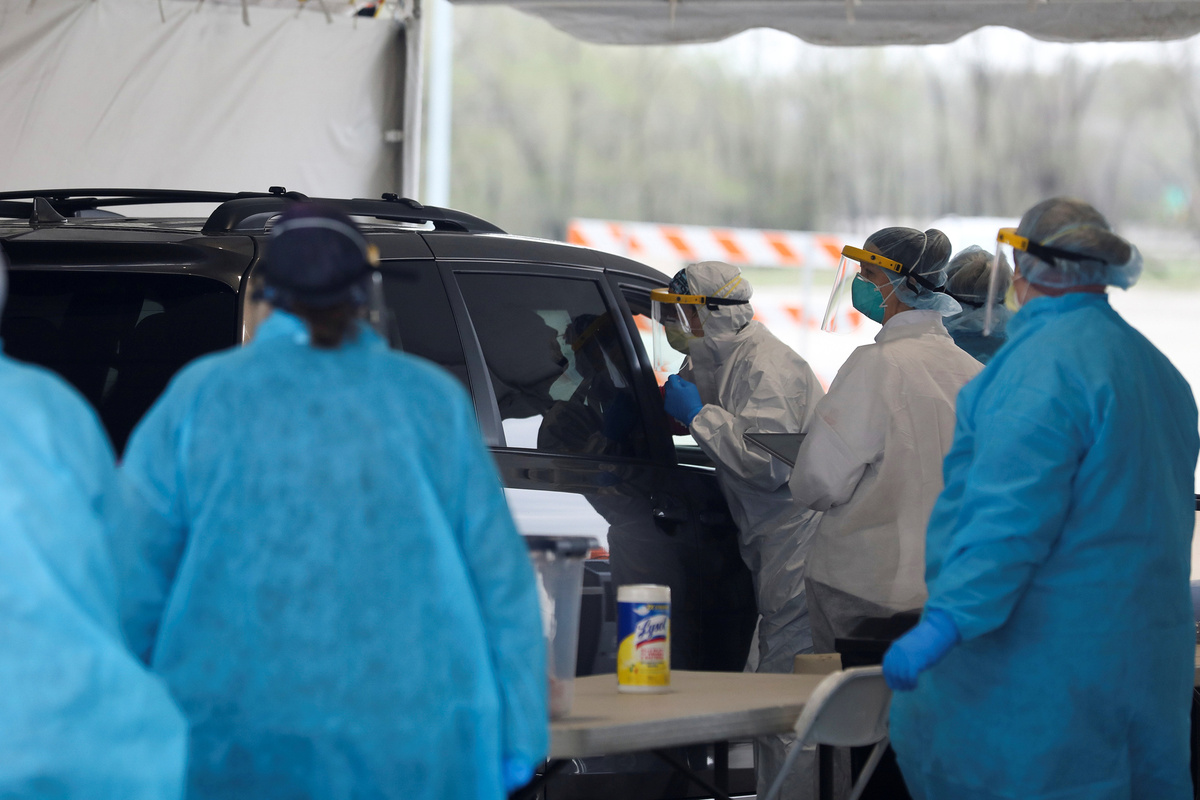
狂野机枪僵尸,他来了! | 8k8 com log in | Updated: 2024-08-17 07:26:32

White House coronavirus experts told Iowa officials last week that the state had the ninth-highest novel coronavirus case rate in the country. They have since revised that finding: Now the state is the country's worst coronavirus hot spot.
Despite that, Iowa State University Athletic Director Jamie Pollard said the school plans to allow up to 25,000 fans into Jack Trice Stadium for the Cyclones' season-opening football game against the University of Louisiana-Lafayette on Sept 12.
The 25,000 figure is the number of season tickets sold. If those ticket holders decide not to attend the game, their tickets will not be resold. The stadium's normal capacity is 61,500.
Pollard said he expects the total number of spectators to fall as fans find out the socially distanced seats they are assigned.
There will be no tailgating allowed, and masks must be worn inside the stadium.
Iowa State President Wendy Wintersteen and her staff consulted with school scientists and others on allowing fans in during the university's home football games, according to The Gazette in Cedar Rapids.
Pollard said that on Monday the school's scientists "painted a picture that the university could stay open, it didn't need to go online only and felt like with further testing and further mitigation — and the athletic department is going to be part of that".
But he added that if those policies aren't followed, fans won't be in attendance again.
The Gazette said Pollard acknowledged financial motivations behind the decision to let in fans. "There are economic issues — I have 215 staff members," he said.
Iowa State University in Ames has about 35,000 students and is faced with a $17.4 million budget shortfall.
The White House report, which said Iowa has the highest rate of cases per capita in the nation, listed Polk County — home to Des Moines, Iowa's capital and largest city — among the "red zones" where the coronavirus epidemic is particularly bad.
A recent New York Times tally said Iowa had the highest per capita rate of COVID-19 cases: 220 cases per 100,000 people. Over the past week, the state has seen an average of 1,187 cases per day, the Times reported, an increase of 127 percent from the average two weeks earlier.
As of Tuesday, there have been at least coronavirus 65,477 cases and 1,122 deaths in Iowa since the beginning of the pandemic, according to data from Johns Hopkins University.
Pollard cited his school's cutting of four sports as an example of what can happen if football games can't be held and revenue is lost from attendance, in-stadium advertising and TV contracts.
Pollard said he believes Iowa State athletics will be able to survive financially due to a 10 percent payroll cut for all staff in his department and the school cutting 20 percent from its annual budget. But without football, it will be tough, he said.
He said his message to Iowa fans is: "Do your part, and let's see if we can make this happen. If we can make it happen, it could be an incredible success story. If it doesn't work — for whatever reason — then we have to pull the plug, but I'll know we tried."
The White House told the state in a report Sunday that it should close bars in 61 of its 99 counties and test all returning college students for the virus, according to the Des Moines Register.
"Bars must be closed, and indoor dining must be restricted to 50 percent of normal capacity in yellow zone and 25 percent of normal capacity in red zone counties and metro areas," the report says, according to the newspaper.
Those recommended actions are much stronger than ones put in place by Governor Kim Reynolds. On Aug 27, she ordered all bars, breweries and nightclubs in six of Iowa's most populous counties to stop selling alcohol after 10 pm. The order is in effect until Sept 20.
While some local officials applauded the more stringent health precautions, others said Reynolds had been too slow to act.
"It's better than nothing," said Johnson County supervisor Rod Sullivan. "But it's too little, too late."
Elected officials in several of the state's most populous counties said they are increasingly relying on data sources other than the state's health department to make decisions about protecting residents in their communities.
They said they no longer trust state data or metrics because cases have been consistently underreported and contain inaccuracies and that Reynolds' guidance thus far has failed to quell the virus' spread.
The Trump administration on Tuesday said it will not join a global effort to develop, make and distribute a coronavirus vaccine, in part because the World Health Organization is involved, The Washington Post reported.

